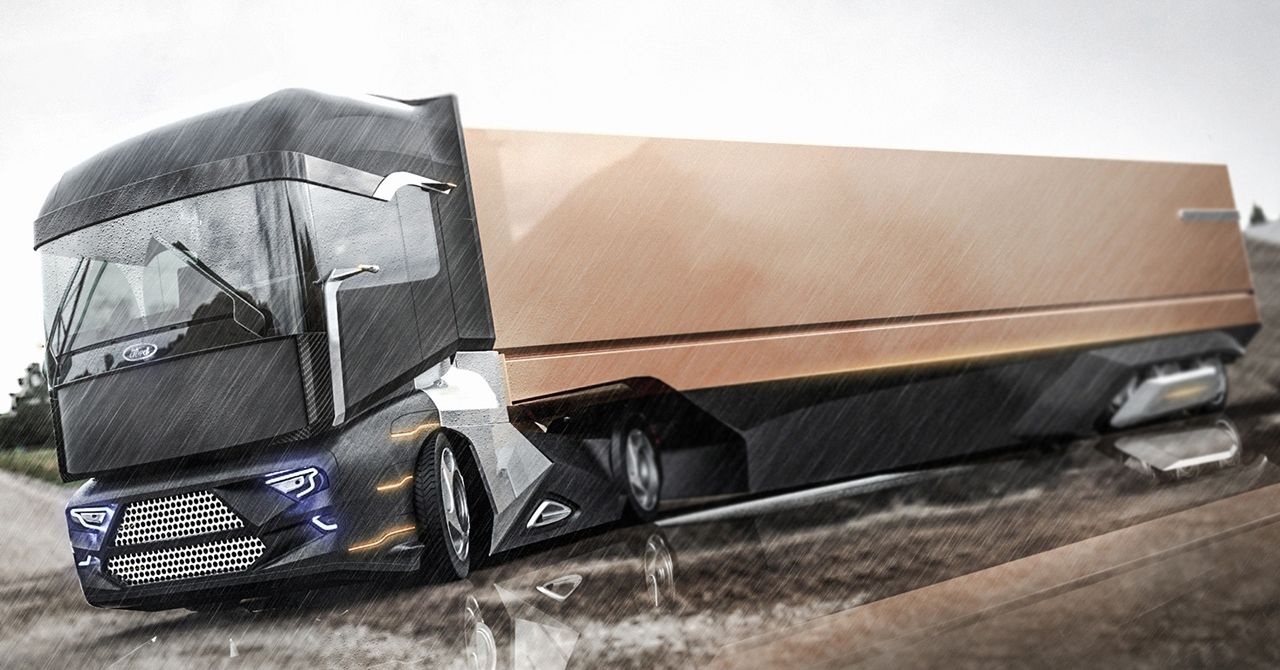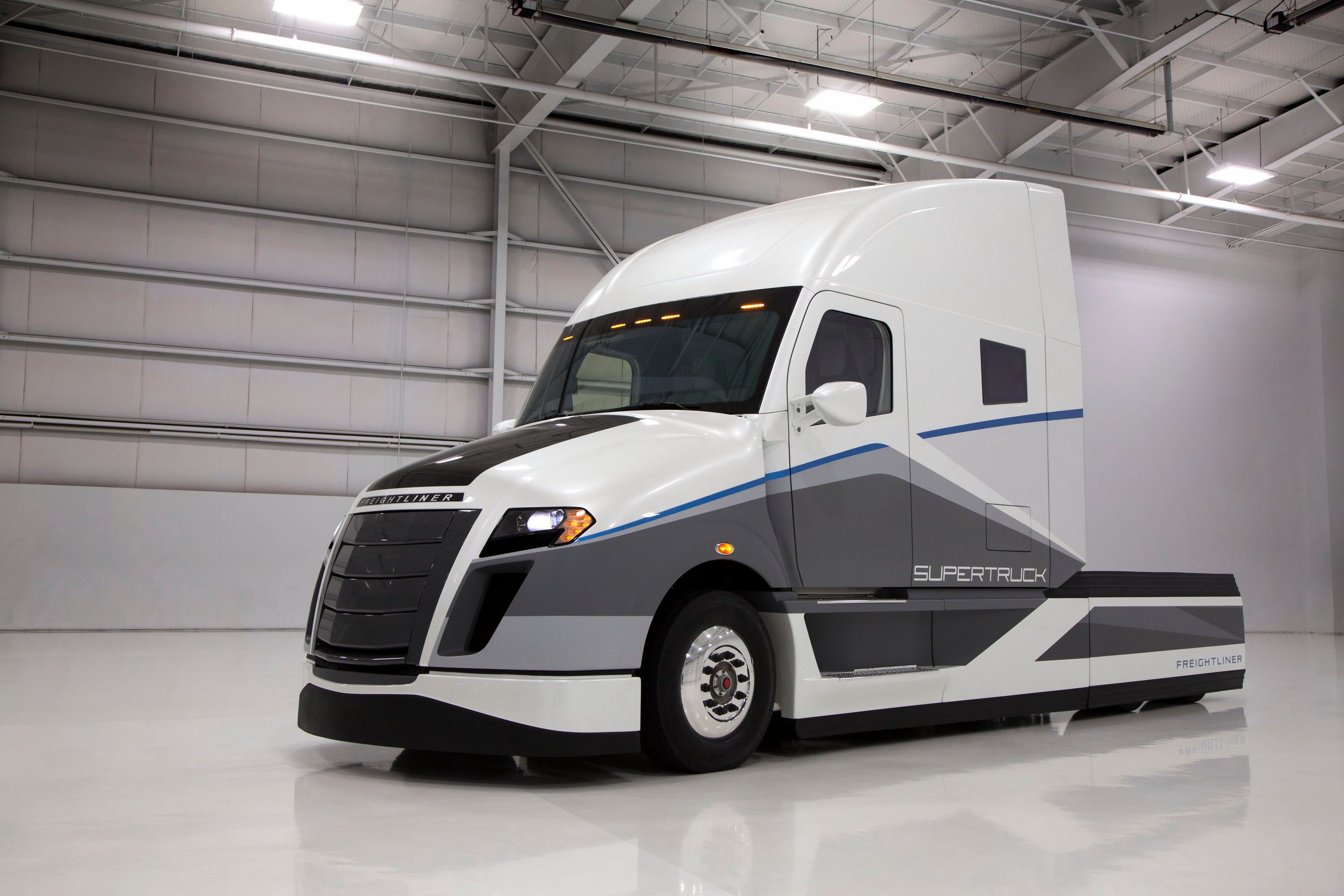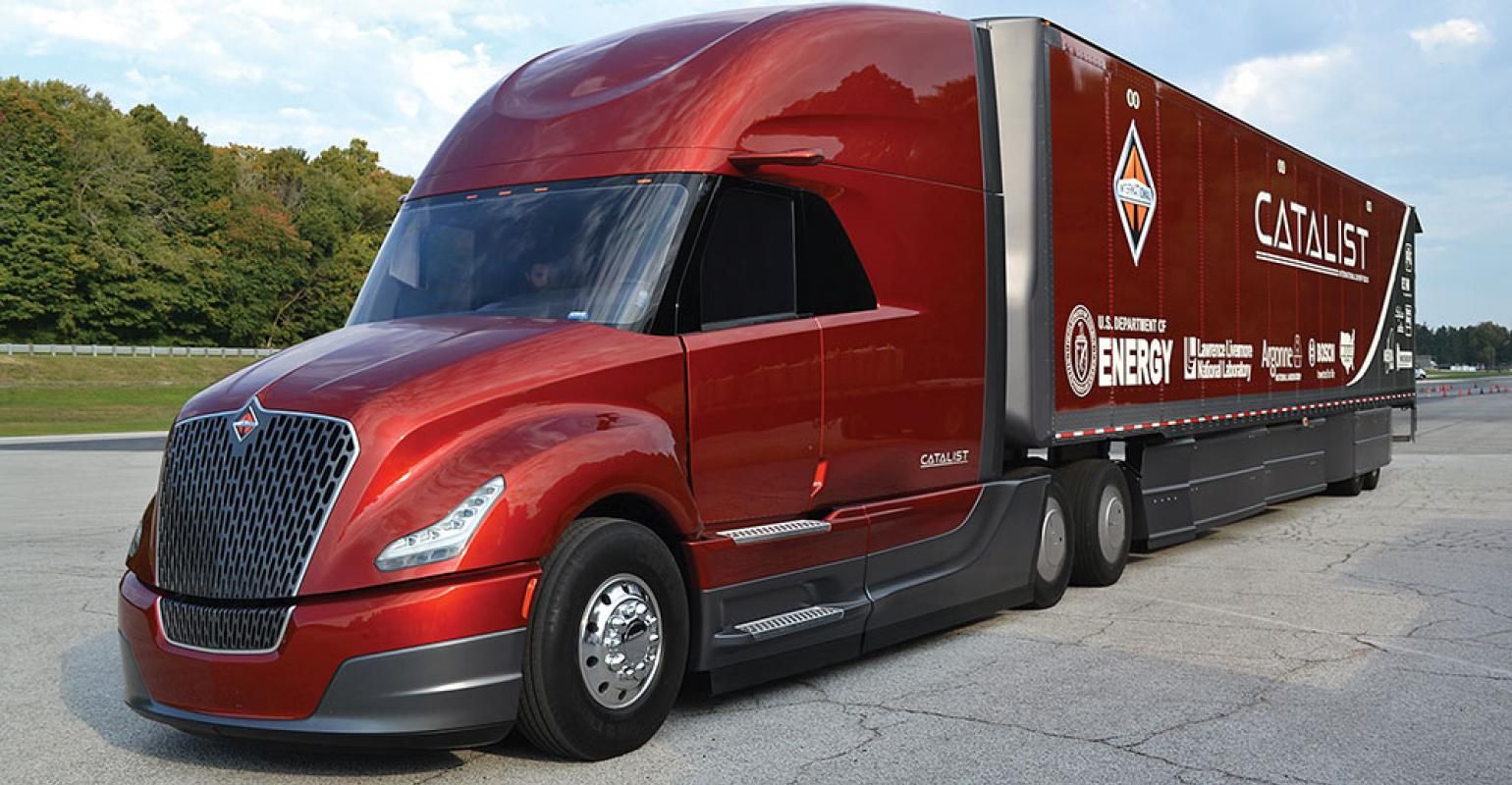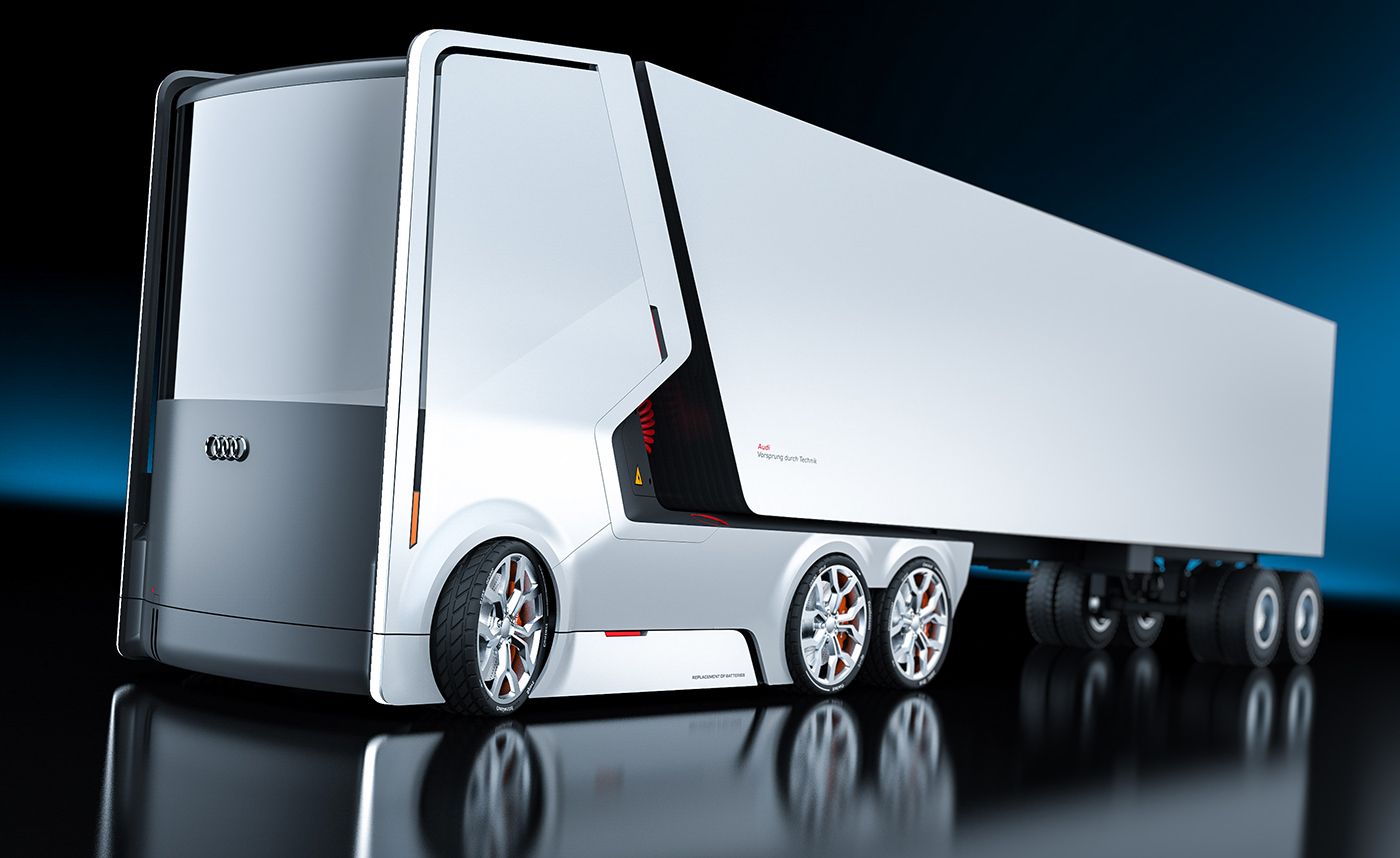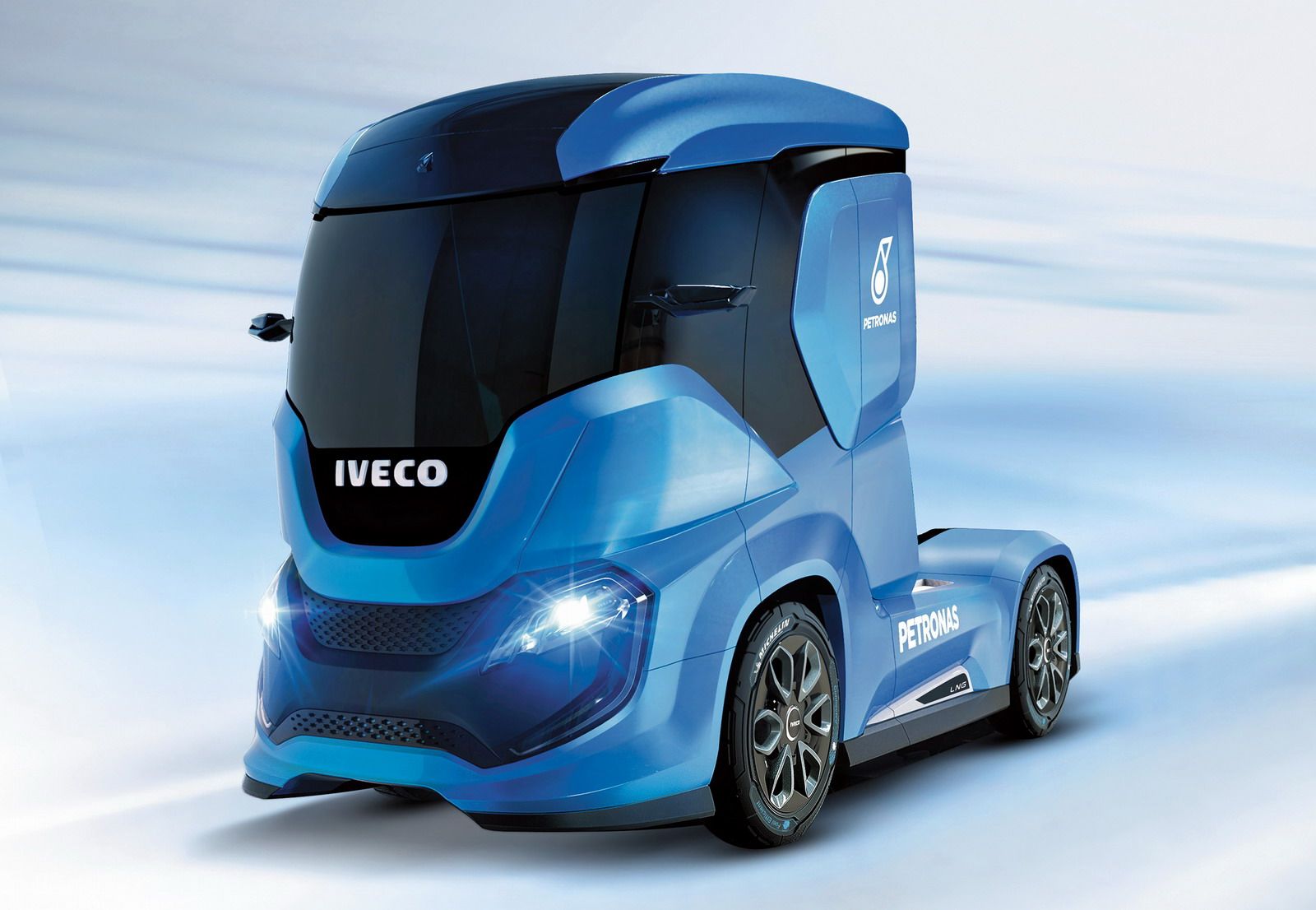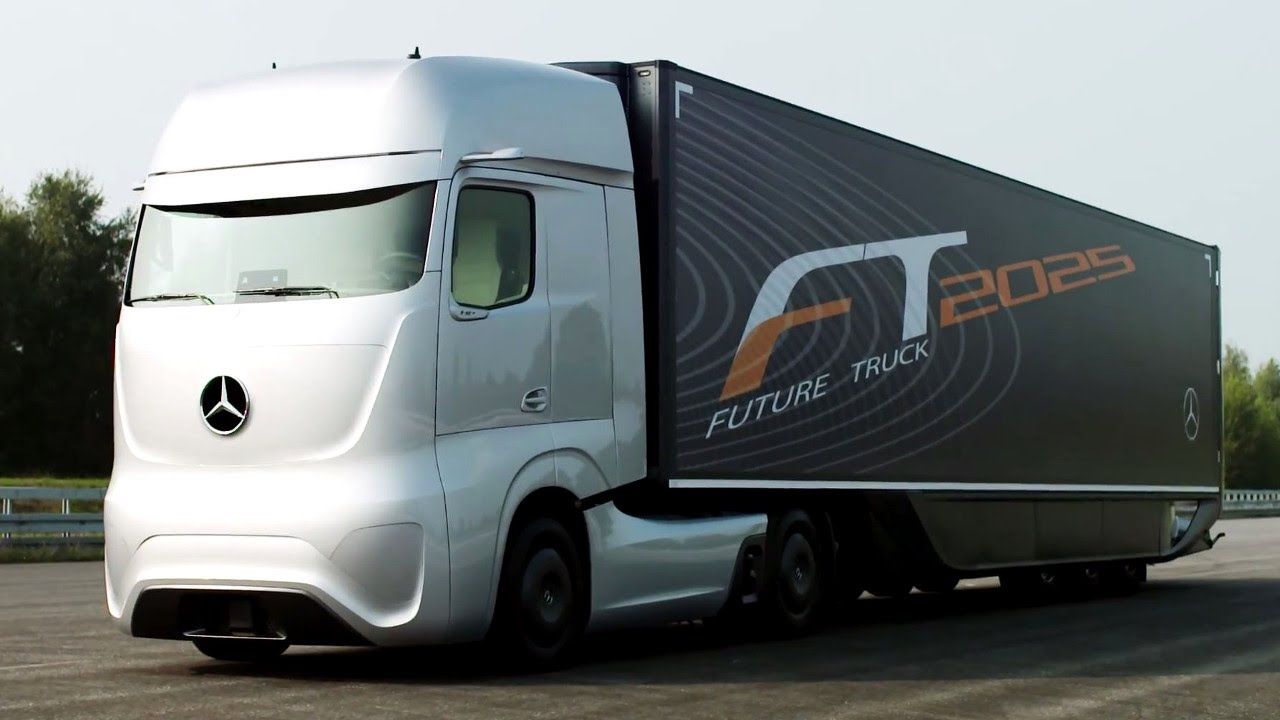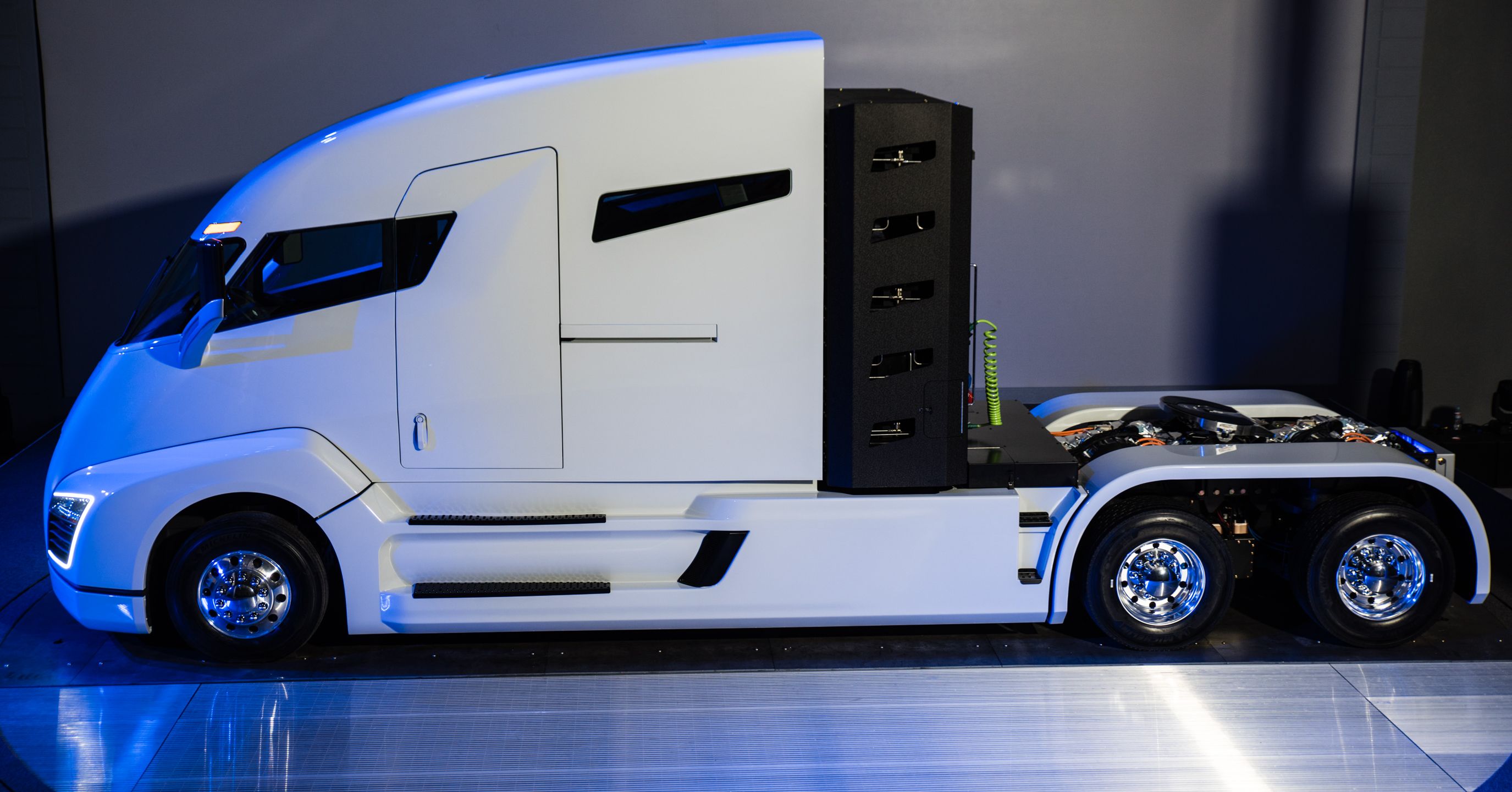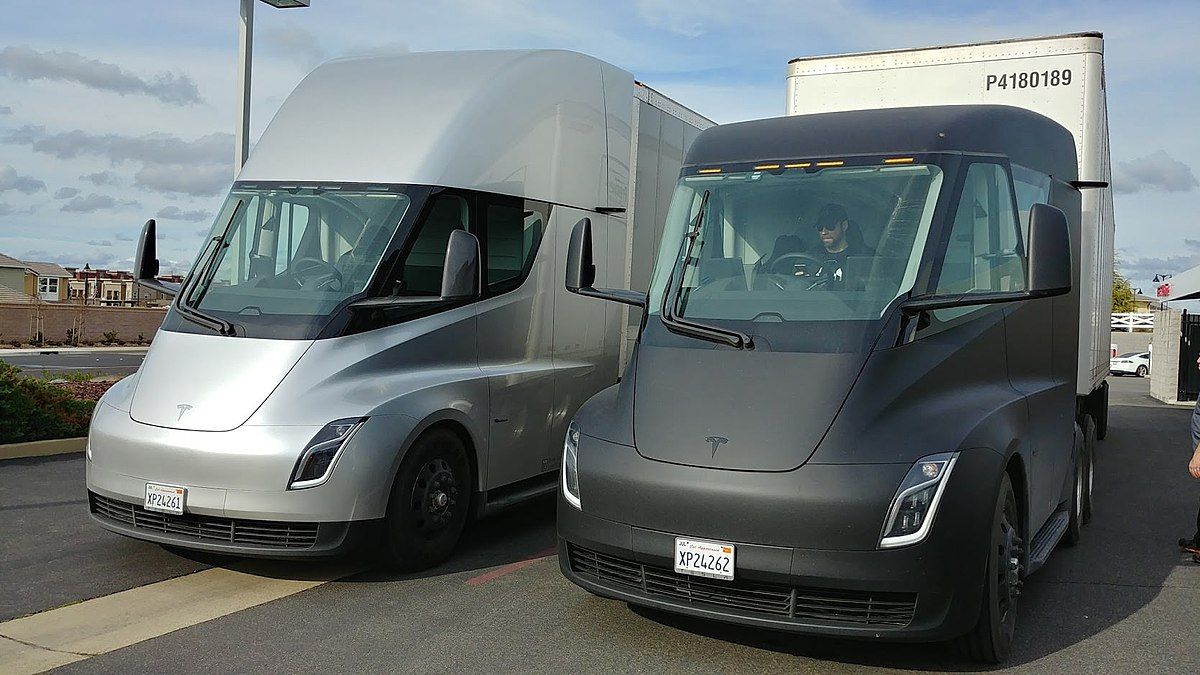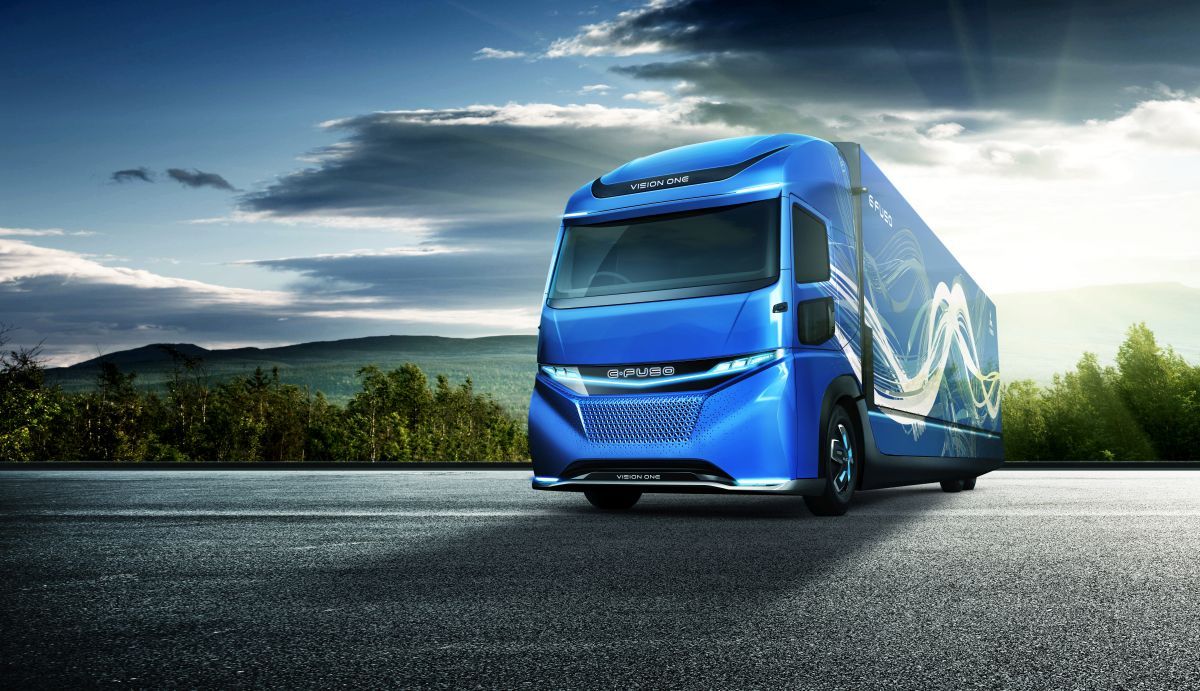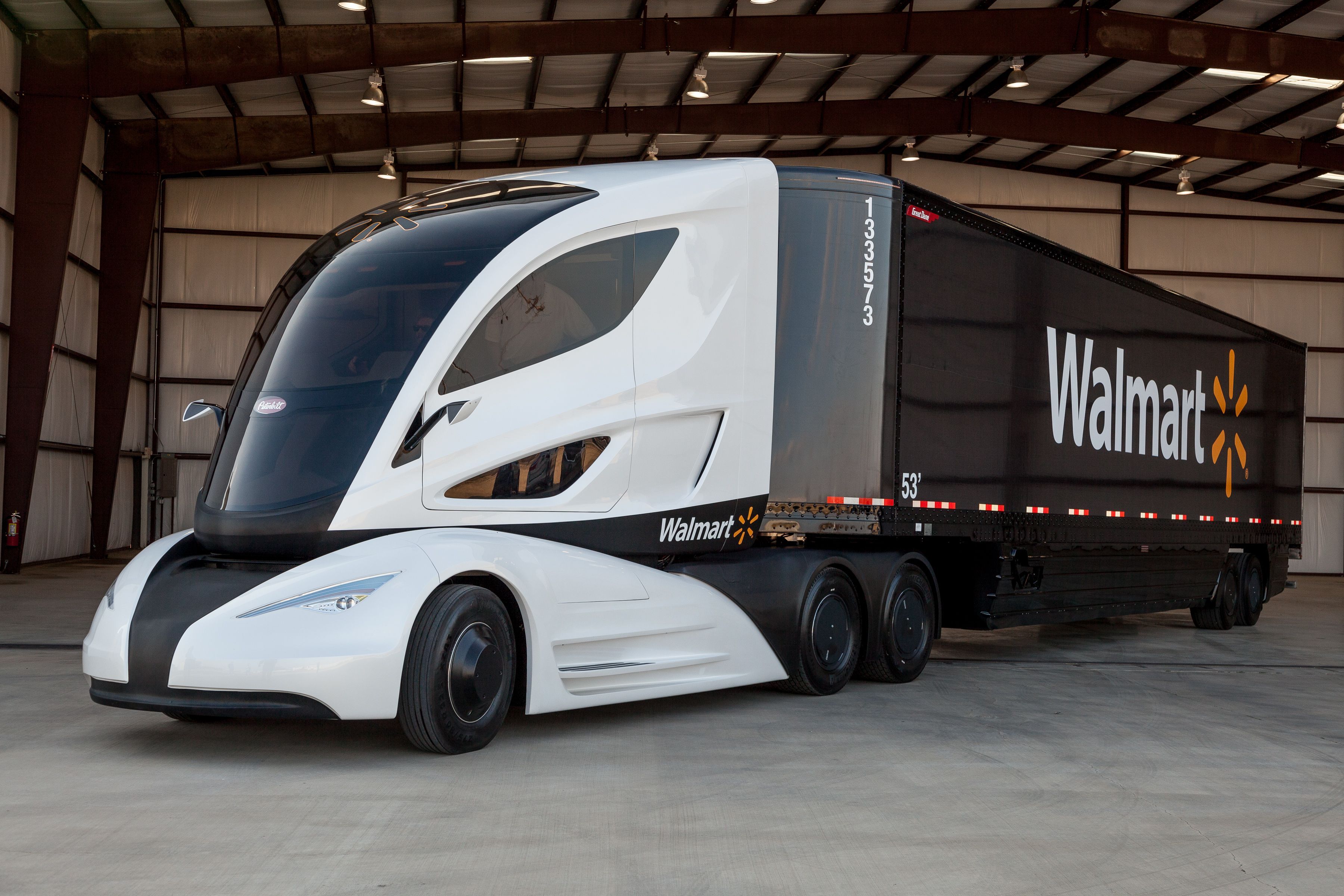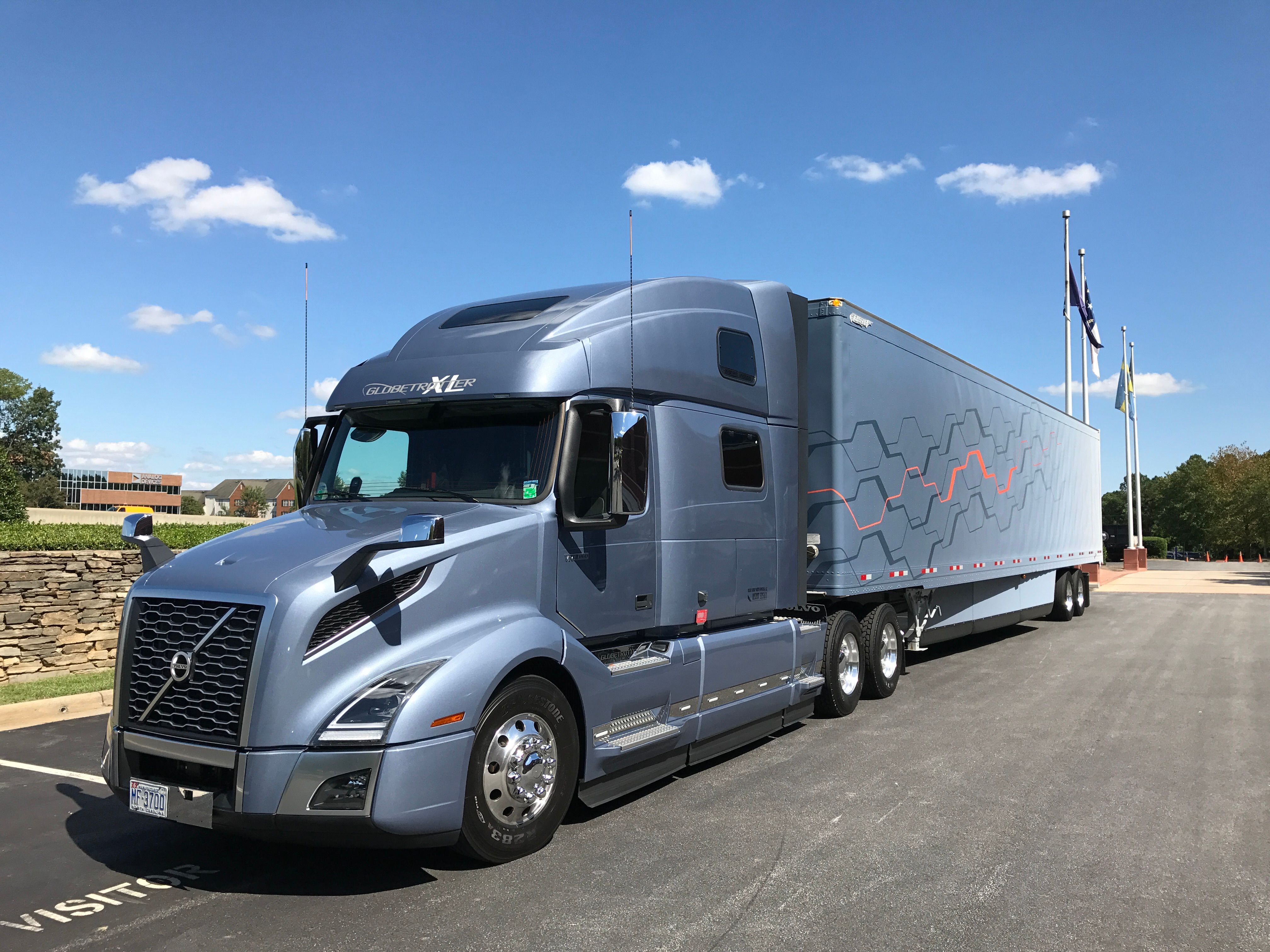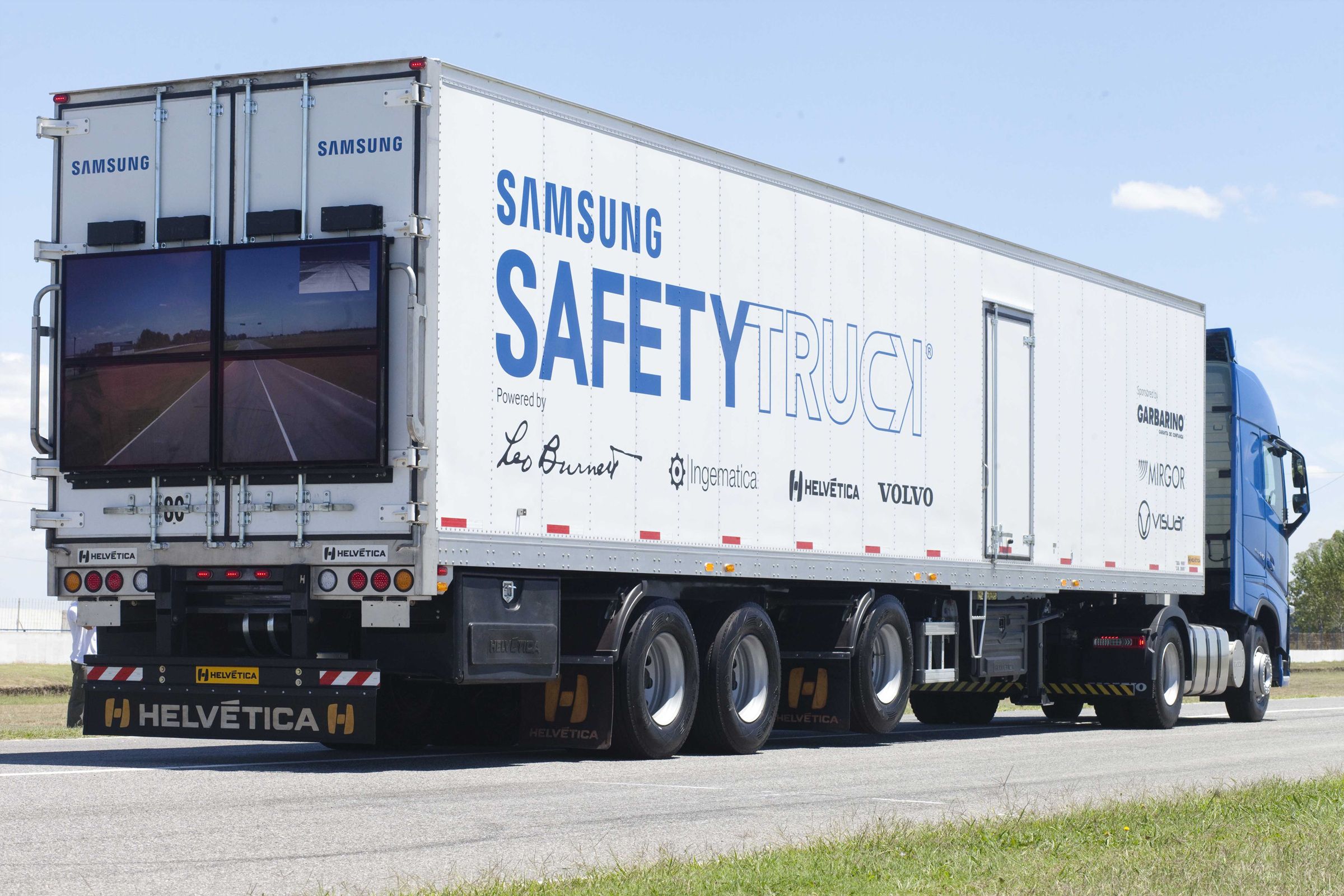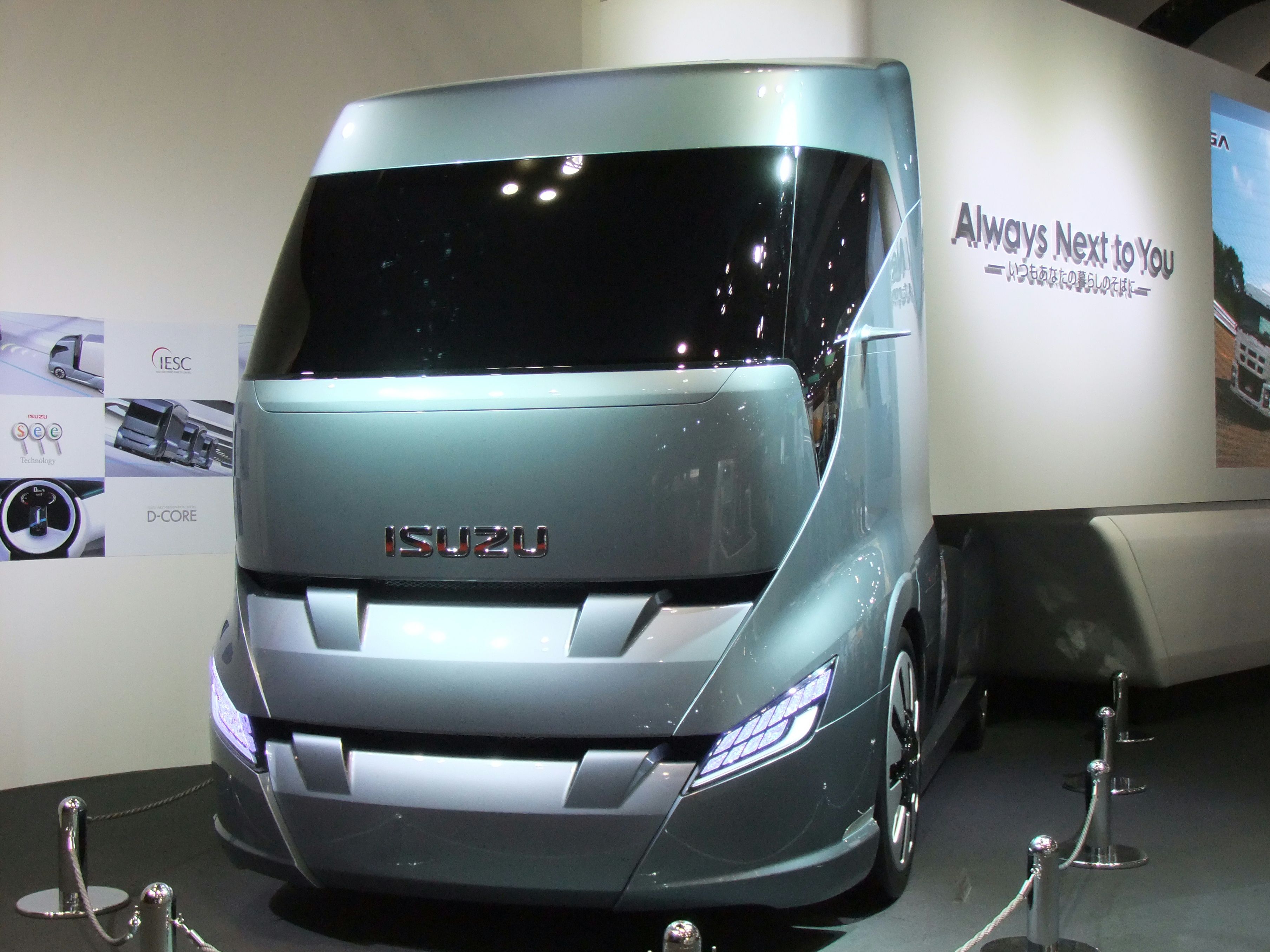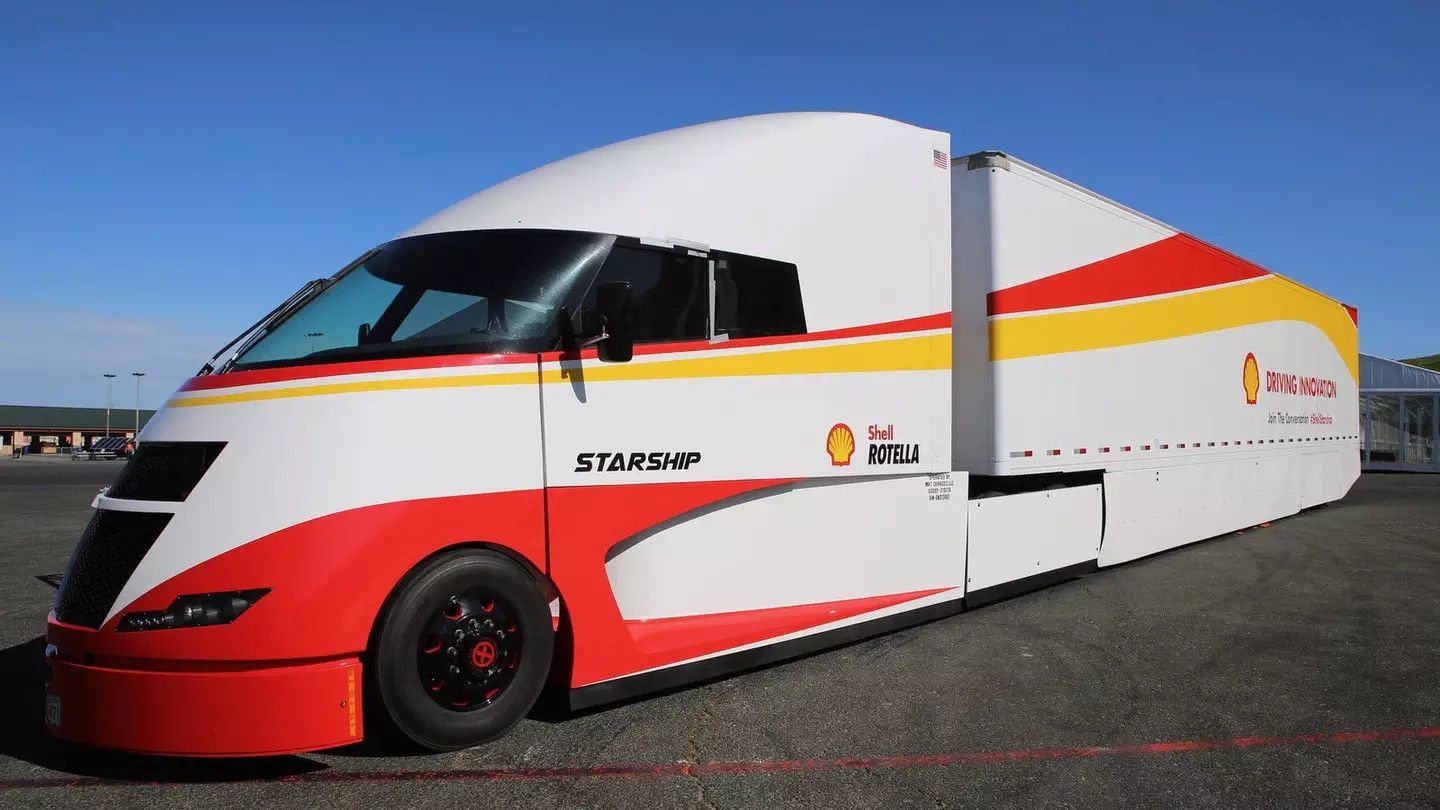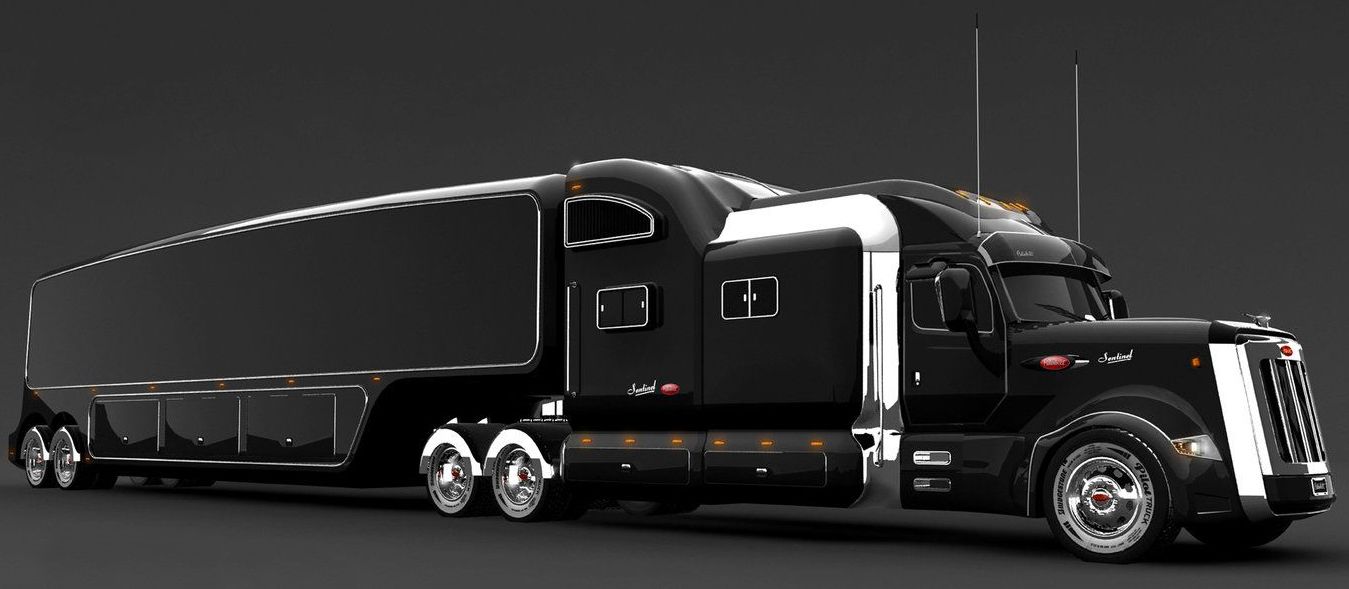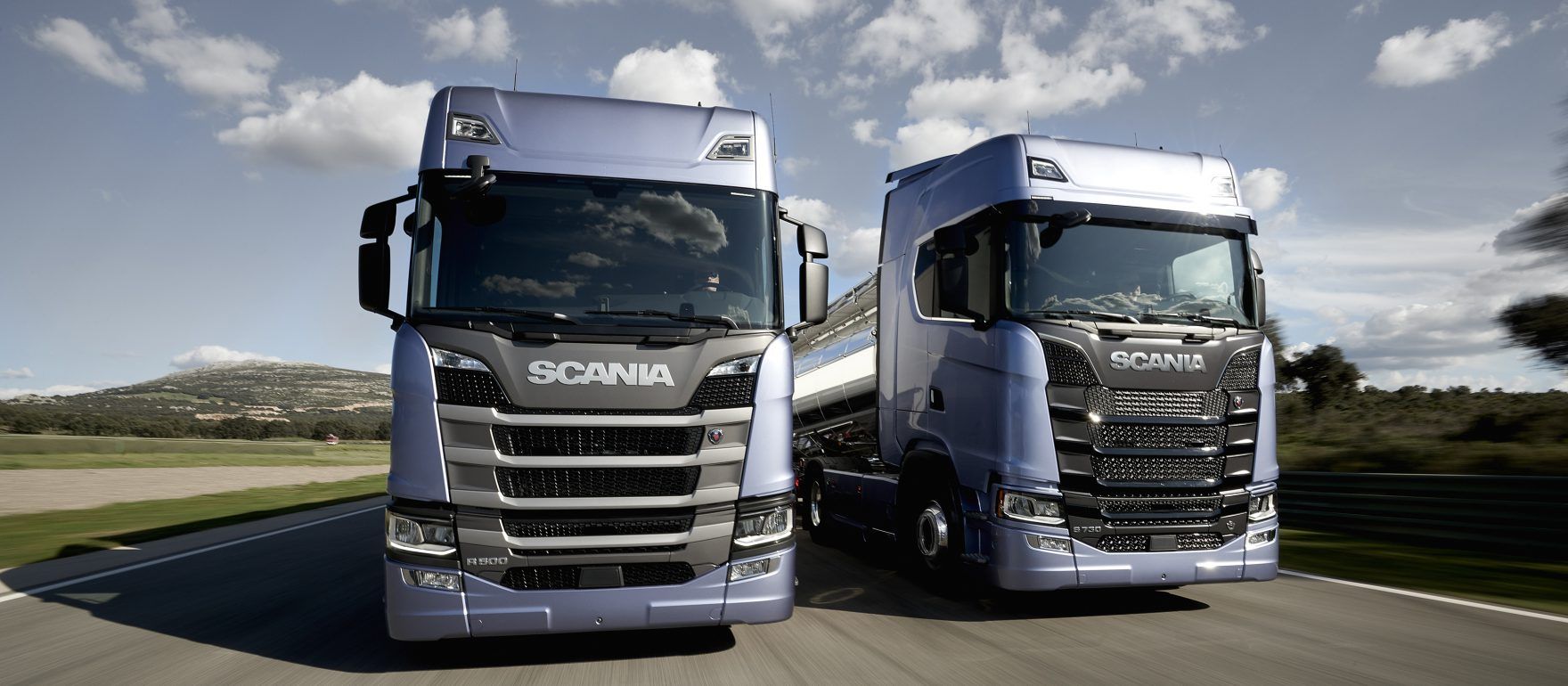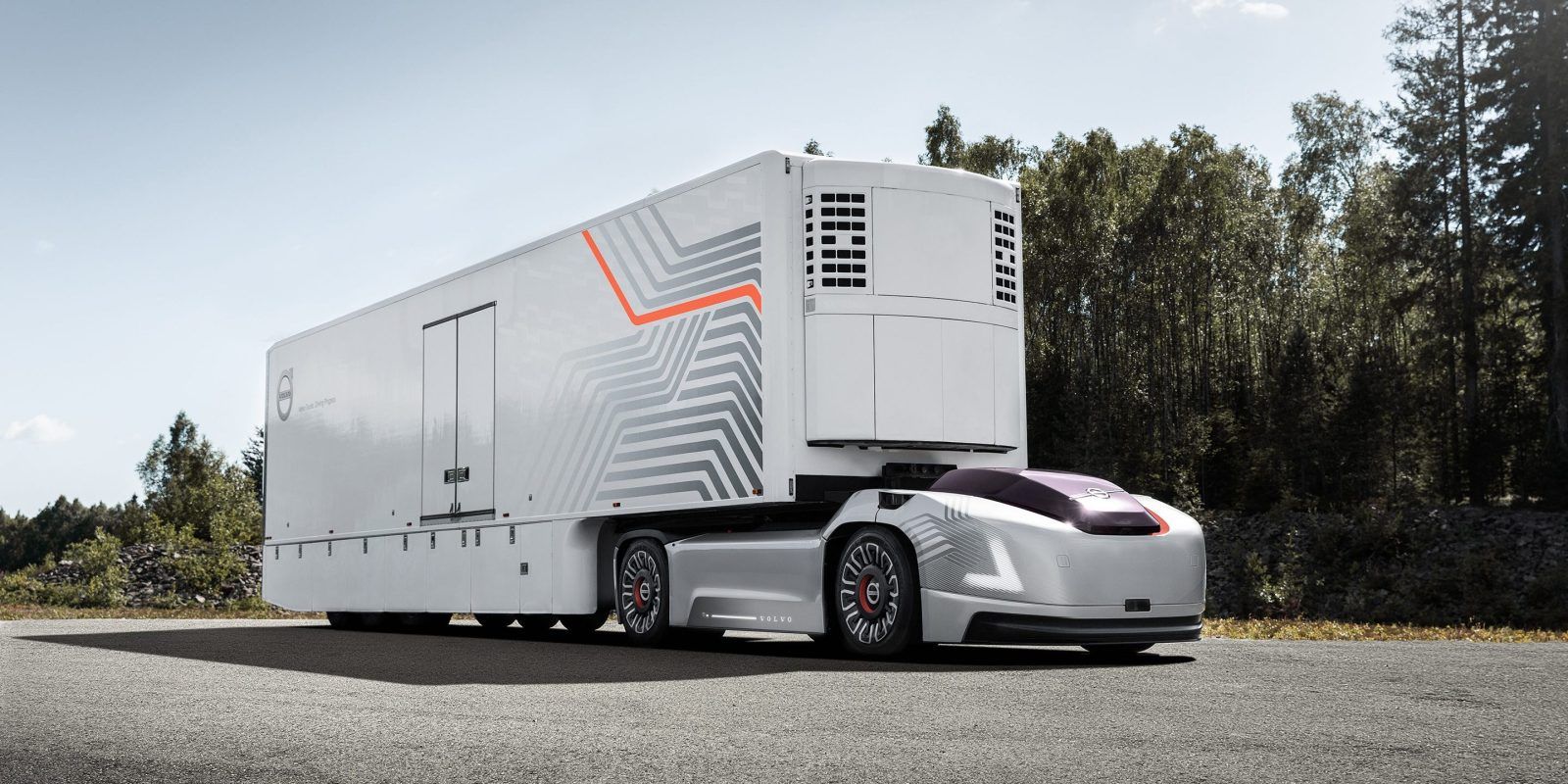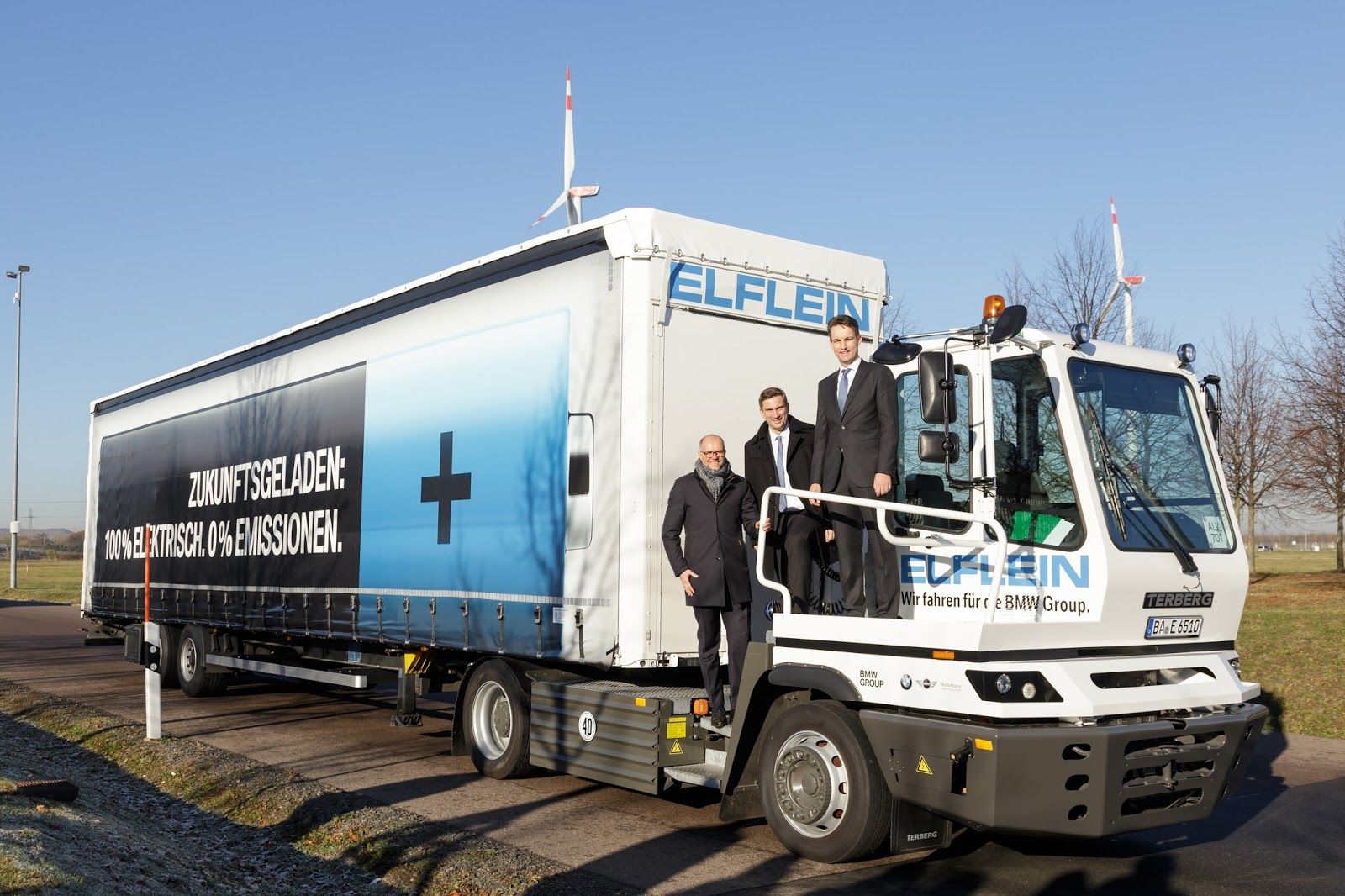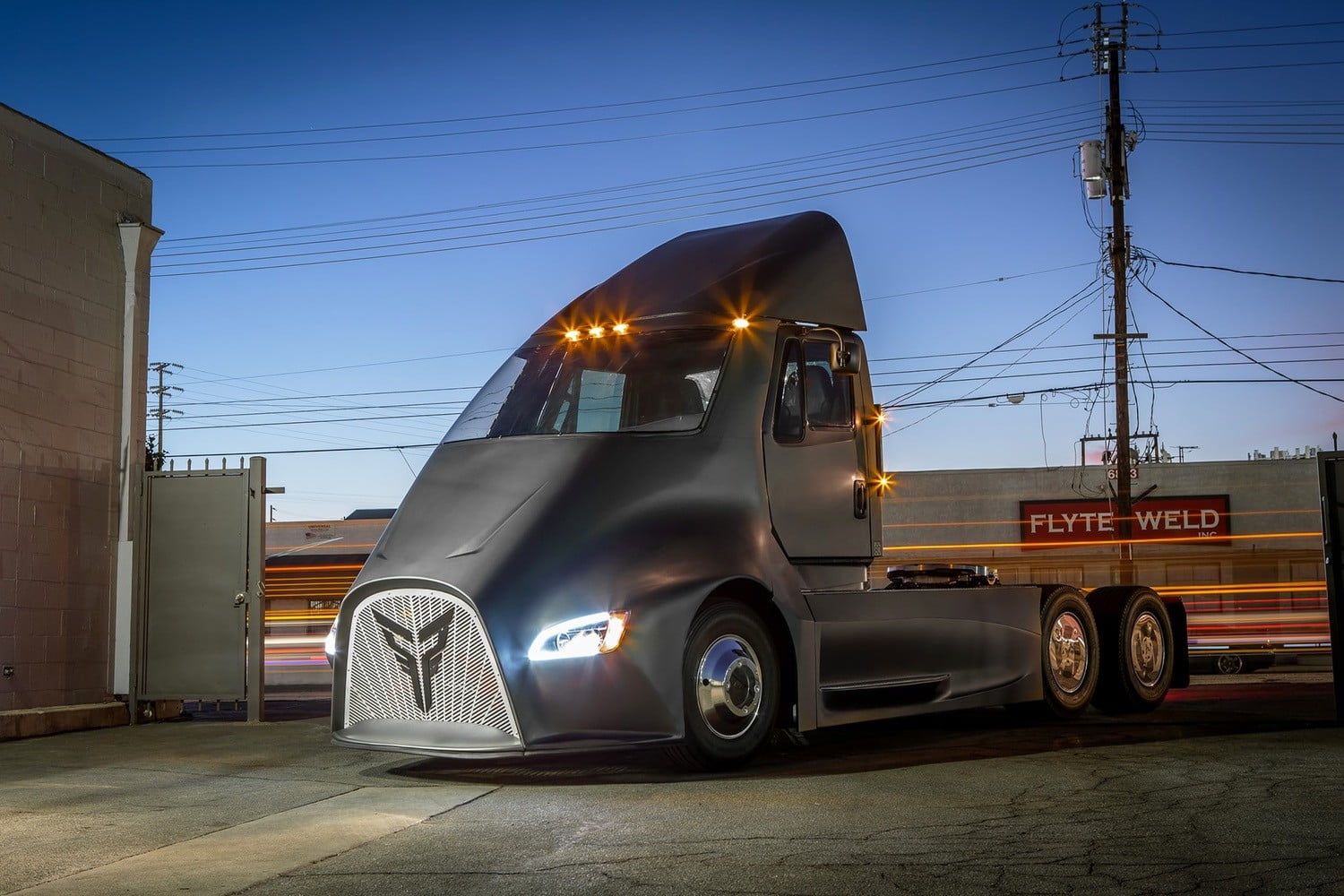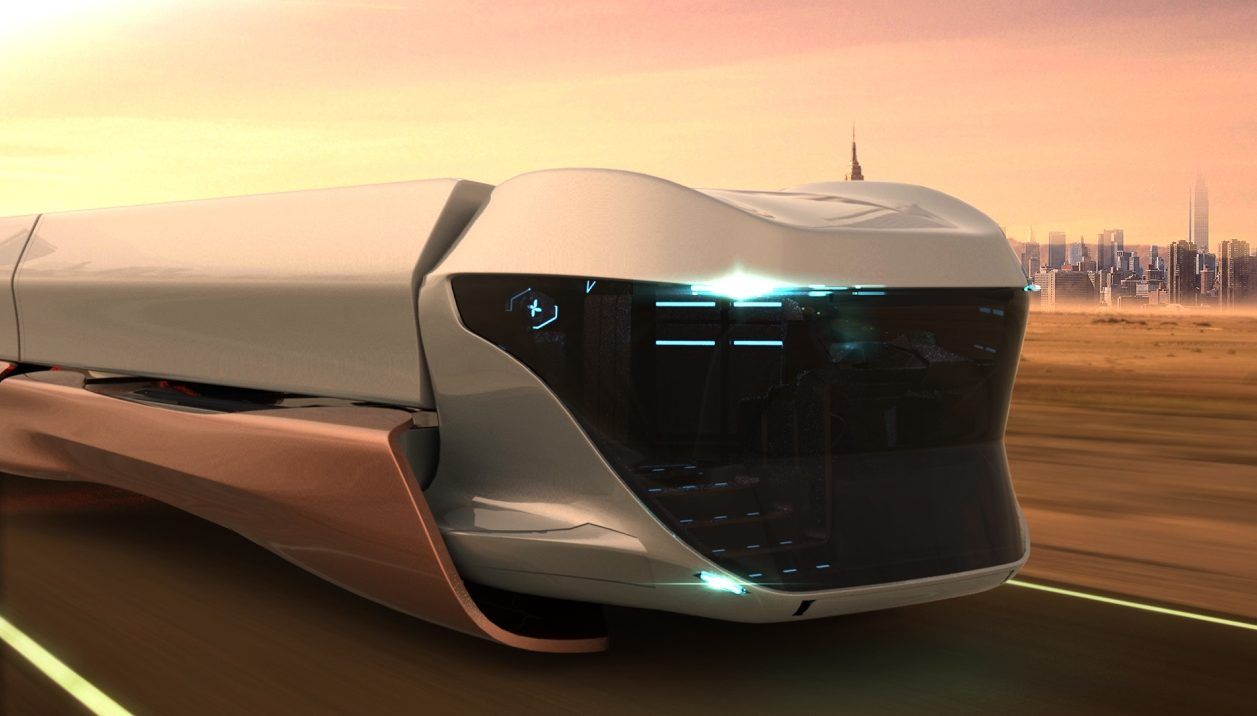The future of long-haul trucking looks very bright indeed. Every year, we’re seeing the race for autonomous vehicles become closer and closer as companies vie to introduce the next big thing to market. Even for companies that aren’t trying to introduce autonomous trucks to their fleets, they have other innovative dynamics and technologies at their disposal that is sure to wow audiences and customers alike.
From the very onset of autonomous driving, it was clear that one of the most widely-implemented uses of the technology would be in the commercial trucking industry, where highways allow for more straightforward driving than on busy, unpredictable city streets. Technological advances in trucking include things beyond self-driving, but it is the one thing that will supposedly save the most money for these companies.
Other technologies that are sure to save money and time are self-repairing concepts, zero emission and electric powertrains, and more aerodynamic and unorthodox exterior designs that will make these vehicles faster and safer. In all, the future looks bright for the commercial trucking industry, so long as these vehicles make it to market.
There are hurdles for these companies, though. The semis of the future focus on safety advancements as well as technological advancements—both for their own trucks and for the cars and vehicles around them. The plan is to make the world a safer environment, and commercial trucking is leading the charge. These trucks not only look spectacular—many of them look straight out of a sci-fi movie—but they have practical applications that might just make you raise your eyebrows.
Here are 20 concept semi trucks we can’t wait to drive—or at least ride in.
20 Freightliner SuperTruck
Back in 2015, Freightliner stole the show at the Mid-America Trucking Show when they unveiled their SuperTruck concept vehicle. It featured aggressive aerodynamics and unconventional styling that was new to many people.
Its accomplishments are impressive: a 115% boost in vehicle freight efficiency compared to conventional semi-tractors on the road today.
A 50.2% increase in engine braking, 54% reduction in overall aerodynamic drag, and a sustained 12.2 miles per gallon logged at 65 mph over a stretch of the I-35 between San Antonio and Dallas, Texas. It also uses a “smart” transmission and other aero upgrades, including some other features it’s already begun integrating into current units. It’s powered by a 10.7-liter engine optimized to work with the truck’s hybrid and Waste Heat Recovery systems.
19 Navistar Catalist
Back in 2013, Navistar unveiled its Project Horizon concept, a truck that is now called the Catalist. Director of innovation and design at Navistar, Chris Ito, said the truck’s design was intended to “make an aerodynamic statement.” He received a lot of strong customer feedback and said, “We need to make sure we validate with people who will actually use the product.” The Catalist is full of technological upgrades, including ultra-aero chassis skirts that fully cover the drag wheels. It was a functional change, and Ito said, “There are some major shapes on the truck that could shape some future vehicles.” Though based on the International ProStar, the Catalist was created to showcase some of the emerging technologies at Navistar’s disposal.
18 Audi Future Truck
Audi’s Future Truck might look like a huge battery, but that’s because it’s such a jaw-dropping statement on the trailer-tractor industry. They promise their truck will incorporate semi-autonomy and self-driving technology. This is just one of many concept designs presented by Audi, and it’s quite an amazing one, but one that is surely to have more traction down the road. It’s primarily intended to transport heavy duty goods like oil. The plan is to make an electric, autonomously-driving truck with two options: Option A is an electric truck autonomously driving on the highway, while Option B is an electric truck show car. So far, they’ve presented both options, and we’ll see where thing will go from there.
17 Iveco Z Truck LNG
Iveco presented their vision of the future of trucking in 2016 with the Z Truck. It is a long-haul concept truck that explores how alternative energy and new technologies can change the industry. It is powered by liquefied natural gas (LNG) in the form of bio-methane. The “Z” stands for “Zero,” in the sense of zero CO2 emissions, zero accidents, and zero waste of driver time.
The truck, designed by CNH Inustrial Design Centre, improves upon current fuel efficiencies by up to 37%.
It is powered by a 460-horsepower engine, and they say the bio-methane powering it will greatly reduce CO2 emissions. The fuel is stored in a 264-gallon tank made of aluminum, with a reflective foil layer to protect it from heat radiation. A full tank will reportedly give the Z Truck a range of 1,367 miles.
16 Mercedes-Benz Future Truck 2025
While companies like Audi, Volvo, and BMW have showing up at shows with their visions of the future, Mercedes-Benz would be remiss to attend without their own concept trucks. According to Daimler, their Future Truck 2025 “has ushered in a new era for the transport industry: it has gone into the history books as the world’s first autonomously driving truck.” The truck of tomorrow will drive itself with a highly intelligent system called “Highway Pilot” that will increase safety, lower fuel consumption, and improve working conditions for professional truck drivers. Besides its futuristic exterior, it was also given a new, sleek interior, with fewer controls and more freedom of movement.
15 Nikola One
If the name Nikola sounds familiar, it’s because it’s the first name of famed inventor Nikola Tesla, the genius who has another famous car company is named after him, as well. The Nikole One is their Class 8 truck, and is truly a modern marvel. It’s powered by a 320-kWh EV battery supplying 6 traction-electric motors with a combined software-limited 1,000-hp and 2,000 lb-ft of torque. It’s inspired by electric locomotives and its horsepower is sufficient to keep a speed of 65 mph with a full load of 80,000 pounds on a 6% grade. The energy source is 300 kW of hydrogen fuel cells that consume 10-lbs of H2 per 62 miles. It has a driving range of 1,200 miles, and consumption equivalent to 15.4 mpg of diesel. It has regenerative brakes to supplement traditional disc brakes. The truck will start deliveries in 2020, after Anheuser-Busch ordered 800 of the hydrogen-powered trucks in May, 2018.
14 Tesla Semi
The Tesla Semi is actually their next slated vehicle to be released. It is a heavy-duty all-electric truck program led by Tesla’s former Model S Program Director, Jerome Guillen. Before joining Tesla, Guillen was an executive at Daimler who oversaw the success of developing the Canadian truck program.
In the current race to bring electric trucks to market, Tesla might be a step ahead of the competition.
Their truck will apparently have a new design of an automatic tire inflation system. One of the other impressive features is the so-called electric drivetrain guarantee, which will last 1 million miles. They’re currently being sued for $2 billion by Nicola Motors over the design of the Tesla Semi, which is poetic in a way.
13 E-FUSO Vision One
Mitsubishi Fuso Truck and Bus Corporation (MFTBC) is part of Daimler Trucks. They’ve announced their plans for the E-FUSO, the first OEM to launch a product brand exclusively dedicated to the electric mobility of trucks and buses. MFTBC celebrated their world-premiere with its all-electric heavy-duty truck concept that has a range of 350 km. The Vision One will be the “top end of the electrification path of the company’s portfolio in upcoming years,” according to Daimler. It will be backed by access to Daimler’s know-how in the fields of battery and charging technology, which will help make the E-FUSO one of the frontrunners in electric trucking. It will be fitted with batteries of up to 300 kW hours, enabling that 350 km range in a single charge. It carries a payload of 11 tons.
12 Peterbilt WAVE (Walmart Advanced VEhicle)
Peterbilt collaborated with the world’s largest retailer, Walmart, and the world’s largest trailer manufacturer, Great Dane, to create the WAVE. It features a teardrop design, is powered by a fuel-neutral turbine engine that can run diesel, gasoline, natural gas, DME, hydrogen, and other biofuels.
Its truck and trailer were designed to improve aerodynamics by 20% over conventional models.
This model was designed from the ground up, so it could see double-digit gains in fuel efficiency. The single-driver seat is set in the middle, the truck got rid of its radiator, which allowed for that aggressive shape on the front. The truck’s powertrain doesn’t have a front engine belt to power things like power steering, air-brakes, and air conditioning compressor, which were all developed with electrified versions of those units, instead.
11 Volvo VNL
In 2017, Volvo released their highly anticipated VNL series, a groundbreaking tractor that met the needs of long-haul trucking customers and professional drivers with its cutting-edge innovations in efficiency, productivity, safety, and uptime. It’s available in multiple configurations, such as the 70-inch sleeper.
Its unique design was combined with new dynamic features, like swept-back headlights and repositioned engine air intakes allowing for less turbulent air delivery.
Its new chassis and roof fairings have optimized airflow up and around the cabin, while an all-new dashboard features often-used controls within the driver’s reach, but also a five-inch color driver information display providing trip and diagnostic data. This isn’t a concept vehicle any longer, per se, but is on the road already, and it’s quite a marvel to the industry.
10 Samsung Safety Truck
With the long-haul trucking industry being such a lucrative business for designers, it’s no wonder that Samsung decided to take part in the future. And their Safety Truck could revolutionize road safety, with quite a simple added dynamic. If you’ve ever found yourself driving behind a semi on a single-lane highway or road, you know it can be scary. You can’t overtake the truck due to its size, because you can’t see what’s happening in front of it. Samsung might have developed a solution to that. It consists of a wireless camera attached to the front of the truck, which is connected to a video wall made out of four exterior monitors located on the back of the truck. The monitors give drivers behind the truck a view of what is going on ahead, even during nighttime!
9 Isuzu T-Next
Isuzu is another car company that hopes to enter into the race to make the most efficient long-haul truck on the planet. Their T-Next truck is a high-concept synthesis of the aerodynamics and safety advances that constitute the future of high-speed logistics. It features styling that integrates state-of-the-art IT devices, and is exemplified by Isuzu’s identity: “Clean, Solid, Emotional.” Inside, the truck has cutting-edge multi-functional devices that are concentrated in the center of the instrument panel. The T-Next supplies vehicle information and diagnostics in a timely fashion to maximize driver safety, and it features retractable steering for optimum driving posture and at-home comfort during breaks from driving.
8 Ford F-Vision
The most famous car company from the United States will definitely be a part of the future of truck driving. The Ford F-Vision is intended to compete with Tesla (as most companies are doing these days). It’s a self-driving tractor built to show what Ford is thinking about the future of commercial trucking.
It’s a level-4 autonomous vehicle, with the goal for the electric truck to drive itself most of the time.
The design shows mirrorless side mounts that hold cameras, and a sleek, aerodynamic design that looks like RoboCop’s helmet. No technical information is available yet, so it is clearly a concept vehicle. It features an “interactive front end,” and the lower section of the truck can light up in different multicolor patterns. It has large C-shaped LED lights and a back-lit FORD logo replacing the usual Ford oval logo. Could this be the future of Ford truck design in general?
7 Airflow Starship
With a name like this, it’s clear the future is upon us. The Airflow Starship “is an innovative, material step toward reducing emissions and increasing overall efficiency and fuel economy in the transport sector,” according to Shell ROTELLA’s “The Starship Initiative” document. This next-gen truck features a custom, aerodynamic bullet design and aims to demonstrate improvements in fuel economy for Class 8 trucks, while lowering CO2 emissions. This was the first prototype Class 8 vehicle to complete a test run coast-to-coast of more than 2,300 miles. The final total truck and cargo weight was close to 73,000 lbs, 28% heavier than the average total gross vehicle weight of US on-highway trucks but the payload was 39,000 lbs, 77% more mass than the average US payload. The Starship attained 178.4 ton-miles per gallon, a 2.5-times improvement over the average US freight ton efficiency of 72 ton-miles per gallon for trucks.
6 Peterbilt Sentinel
Besides the Peterbilt WAVE, the company has a more traditional concept truck designed that is not associated with Walmart. The Sentinel is a long-base truck that aims to deliver extravagant and elegant design with a luxury touch, including luxury chromed lines and massive classic style for the front grille and modular cab. This huge truck is designed to transport everything from simple objects like boxes of product to more complex and heavy loads. The Peterbilt Sentinel truck concepts offers the possibility for customizations, moving the name of Peterbilt—the builder of the world’s most powerful machines (according to their own press release)—in a new direction. The Sentinel might look more traditional than others on this list, but it’s still an awesome truck we’d like to check out.
5 Scania P-Series
The Scania P-Series is a futuristic transportation concept that is sleek and futuristic, thanks to designer Adam Palethorpe’s uses of the “better looks” idea on his giant cargo-hauler design. Inside the cab, the concept is a long-distance overnight haulage vehicle with a futuristic, minimalist appearance.
It aims to change public perception of heavy goods vehicles as noisy, intimidating, unsafe, and environmentally damaging.
The interior space provides practical solutions for the operator, including a comfortable environment to live and work in. Exteriors include high-tech fenders which show the duration the truck has been on the road for other drivers to see—a clear indicator that will increase safety standards for other trucks on the road.
4 Volvo Vera Autonomous Truck
Besides their newly released, more traditional VNL series, Volvo also has a high-concept long-haul truck in the works: their Autonomous Truck. As the world’s second-biggest truck maker, the company presented their take on autonomous truck driving just two months ago, in September 2018. Their “truck” does not have a driver’s cab, but simply looks like a battery pack on wheels. Volvo chief technology officer, Lars Stenqvist, did say, “We believe there will be a driver behind the steering wheel for the foreseeable future, but we will pretty soon see self-drive commercial vehicles in confined areas.” The cabless truck, called Vera, can pull loads weighing up to 32 tons, and can be attached to any standard trailer. “Vera means faith, and we have faith in the future,” says Michael Karlsson, head of autonomous solutions at Volvo Trucks.
3 BMW Terberg Type YT202-EV
This 40-ton electric truck is piloted by BMW. Though it might not look as technologically fancy and sleek as some others on this list, it’s one of the most practical semis on this list. BMW and SCHERM put the Terberg Type YT202-EV into service as a battery-electric truck that will be used for material transport.
Eight times a day, the truck drives the 1.2 miles from SCHERM’s logistics center to the BMW plant in Munich and back.
They tested their autonomous piloting plan for a year in 2015 before releasing it onto the world at large. The electric truck here is designed to transport vehicle parts such as shock absorbers, springs, and steering systems. The battery can take the truck up to 62 miles—so it’s not up to long-haul standards yet, but may well be in the future.
2 Thor ET-One
Perhaps one of the coolest looking concept vehicles on this list is the Thor ET-One, a “fully electric, fully capable” truck at 80,000 pounds, according to Thor’s website. It was built to haul 80,000 pounds, with instant torque available at zero RPM. It’s designed to save operators money and to get the job done. Its vehicle range is up to 300 miles for short haul and regional tractors. It’s built with Tier 1 components designed to maximize uptime and lower the cost of repairs. Its powertrain options range from 300 to 700 horsepower, with a zero emission powertrain exempt from air quality regulations. It has regenerative braking and onboard safety systems to improve driver safety, and its reduced maintenance, fuel, and compliance costs combine to lower total cost of ownership.
1 Scania Magley Concept
According to Behance, “By 2040, autonomous vehicles will likely be prevalent all over the world. Automotive interiors will become more of an environment to the occupants.” We agree that trucks today that are typically manned for uncomfortably long hours in cluttered interiors will probably be a thing of the past by 2040. The Magley Concept allows for users to have open space, the option of autonomy, and excellent visibility. The truck is powered by a battery and magnet system that runs through the main “skateboard.” It depends on a magnetized road system, so this is truly a truck of the future. And who knows how far away that future is? Even the truck’s picture looks like a something out of a sci-fi film in a utopian landscape. Hopefully, that’s what the future looks like!
Sources: behance.net, daimler.com, ccjdigital.com, samsung.com, thortrucks.com, rotella.shell.com, and psipunk.com.

